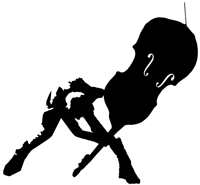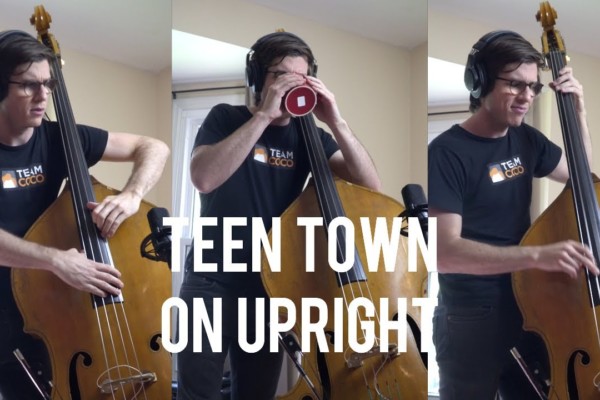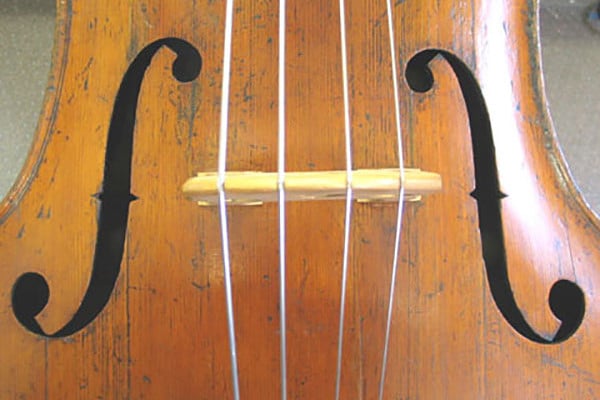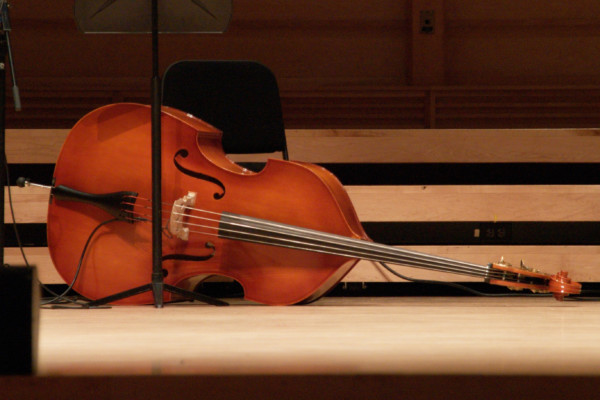Reducing Feedback on Amplified Upright Bass
 Steve Bunker sent in this request: “Can you talk about the best way to amplify the upright to avoid feedback and the best way to record the bass. I play mostly rockabilly.”
Steve Bunker sent in this request: “Can you talk about the best way to amplify the upright to avoid feedback and the best way to record the bass. I play mostly rockabilly.”
Hi Steve! I’ll get to the recording part of the question another week. For today, let’s talk feedback.
Feedback is a real problem for anyone amplifying the double bass at high (or even moderate) volumes in small spaces. For eliminating feedback when you are not playing (i.e. in between songs), you may try a noise gate/suppressor pedal or turn the volume down/off. If it happens while you are playing, proper EQ will go a long way to reducing feedback. Each bass, band and venue combination is slightly different, but basically you’ll want to find the frequency where the feedback is occurring and you reduce that frequency in the EQ. In my experience it is often in the mid-range, or sub bass range.
If you can manage it, put some distance between you, your speaker and the kick drum. I would also avoid microphones and use a good transducer pickup(s). For the loudest sound and no feedback, a magnetic pickup will do the best, although the acoustic sound of the bass is sacrificed. A good compromise is to blend a transducer with a magnetic, giving you volume and feedback resistance with a warmer upright bass sound.
Sometimes changing equipment and running away from your speaker and the drummer still won’t do the trick. Perhaps a magnetic pickup just isn’t the sound you want, for example. Although we can sometimes use gear to solve the feedback problem, the real problem is the bass itself. The upright bass has a very large resonating chamber, and it was made to vibrate! The best basses vibrate easily and well, which can be a source of feedback woes when we plug in. So, if the gear doesn’t suit your fancy, you can try modifications to the bass itself.
The most non-invasive thing you can do is to lean the neck away from you, straddle the “E side” of the bass and put pressure on the top and back with your legs. Not only will this reduce the vibration of the wood, which can stop the feedback, but you will be in the trademarked Rockabilly Bass Stance! Needless to say, this isn’t a stance that promotes great left hand facility, but we often don’t need that when we are slappin’, now do we?
For even more feedback reduction, dampen the vibration of the strings between the bridge and the tailpiece (called the “after length”) with cloth or foam. If you still need more, shove foam tightly between the fingerboard and the top as well as between the tailpiece and the top. This dampens the vibration of the instrument and helps reduce feedback. I use half of a Nerf football wrapped in gaffers tape.
You can also cover the F-holes to reduce feedback. One of the best things to use for this is, again, foam. Shove it in the F-hole (but not all the way in the bass) so that it fits tightly and tape it to the bass. Finally, if you get a painted, rather than varnished bass, the paint will inhibit the vibration of the bass. This will make it softer acoustically, but will help with feedback. Plus your bass will become a piece of visual art as well!
Do all of these things and you can get back to playing and quit worrying about the horrible sound coming out of your amp.
Keep Slappin’!
Dr. Donovan Stokes is on the faculty of Shenandoah University-Conservatory. Visit him online at www.donovanstokes.com and check out the Bass Coalition at www.basscoalition.com.




What has always helped me is to put a mute on the bridge. This is something that symphony bassist use when the music calls for it. It pressure-fits onto the bridge so there is no permanent installation. It also gives the bass a little tighter sound and less boomy or echo-y.
Besides adjusting your EQ settings, I found a great and eligant solution for plugging up the F holes that all but eliminated the feedback that I was getting. Check out http://www.dougsplugs.com/beforeafter.html I ordered a set of plugs the cost with shipping was around $100.00. Well worth the price.
I play in a jazz/rock/rockabilly/latin trio where I sometimes need fairly high volume and I’m close to the amp. I used to get terrible feedback but I did some research and bought a Fishman Pro-Eq Platinum compressor. I don’t work for Fishman by the way. I think I got lucky because this unit solved my problem. It’s worth a try. There may be similar products available, but the Fishman is fantastic.
The biggest problem that I’ve encountered with my amplified bass (besides my a-hole neighbors and a-hole cops) are the windows in my practice room vibrating like crazy. I’ve got like double pane windows that are practically like new; I removed the screens and the windows still vibrate and buzz like mad when I jam. A buddy told me that I should have like 1/2 inch glass in my practice room windows, but I can’t afford that. This sucks cause I play through two Ampegs with 18 inch subs that can be heard blocks away (my pesky neighbors and frigging cops spoil my playing at the limit). That’s the problem living around wacko conservative people. I’m thinking like I should like put heavy drapes on my windows and maybe that’ll like stop the window rattle. There’s no way I’m going to stop playing at big volume. Bass is in my blood!
[…] Reducing Feedback on Amplified Upright Bass – No Treble by Donovan Stokes | Monday, March 14th, Follow @donovanstokes. 4. Steve Bunker sent in this request: “Can you talk about the best way to amplify the upright to avoid feedback and the best way to record the bass. I play mostly rockabilly.” A good compromise is to blend a transducer with a magnetic, giving you volume and feedback resistance with a warmer upright bass sound. Sometimes changing equipment . Our newest shirt design is here! This distressed logo tee is […]